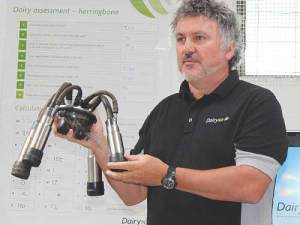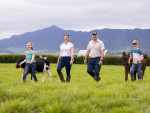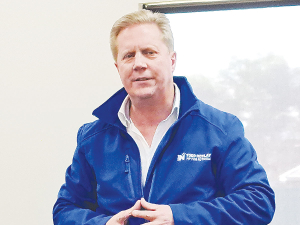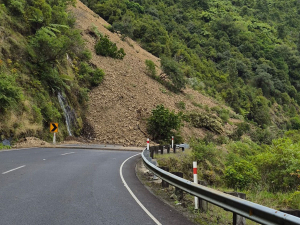Milking frequency can be adjusted in a number of ways during a season, or part of a season, to become more efficient, reduce farmers’ hours in the milking shed and improve their lifestyle.
This is the message from Josh Wheeler, milk quality consultant.
Many countries’ farmers stick rigidly to milking twice a day, exactly 12 hours apart, and think they produce more milk, Wheeler said at a recent DairyNZ event.
But in the Kiwi system starting at 5am makes a very long day. So typically the NZ method of twice a day has been at intervals of 10 hours and 14 hours.
Now many farmers are milking three times in two days.
In the South Island in late summer, 50% of farms can be on three times in two days. But farmers wanted three times in two days because with 14, 16 or 18 hour intervals, one milking lands at 1am or 2am. A lot of countries do that but typically they have barns with grain-feeding systems and a lot of staff.
“Farmers in NZ find they like to sleep in mornings but they don’t like late nights,” Wheeler says.
A group of farmers at the top of the South Island doing three in two days for 10-15 years decided they would shift the system to suit themselves. They’d start in the morning at 7am rather than 5am so they got home by 9am. The following day they did 16 hours, starting at midday, avoiding the heat of the afternoon. They found they did better when they shifted the hours.
Research shows three mikings in two days for the whole season amounts to a 7% average loss of production.
“But we found that a lot of commercial farmers end up doing better than the research shows on three times in two days,” he says.
People who do it after Christmas have 0-5% losses. Some people aren’t losing a lot when they do three in two, he says.
For once-a-day (OAD), research shows the drop in production can be 4-15%.
“If you are a dead-flat irrigated farm in Canterbury doing 500kgMS/cow/year, and you go to OAD, your losses are going to be bigger, aren’t they? If you are up in Northland where, because of the nature of the land you are doing less, the change in loss probably won’t be as big.”
DairyNZ scientist Paul Edwards says one analysis of herd testing data from farms within 20km of each other showed that in the first season of dropping from twice a day to OAD there was about 19% lower production than from OAD herds; by the second, third and fourth year it was down to minus 4%.
“For whatever reason, in this data a group of OAD herds that had been doing it for a long time were back up to 0.9%,” he says.
“When you dig into the detail and look at culling reasons -- under twice a day the culling reason is empties. The OAD culling reasons are udder, cell count, low production.... So you are breeding a herd that suits the system over time.”
The key thing to understand about milk accumulation in the udder is that it’s pretty much linear up to 16 hours, Wheeler says. That’s why the losses are less doing 16 hour milking than 24 hour. A lot of the losses came between 16 and 24 hours.
“This is where we are aiming to get the genetic gain: they are trying to breed a cow that loses less during this period, or is able to carry more milk to 24 hours in respect of its capacity. This is probably where the Jersey does a lot better, especially when we are paying for milk solids.”
One of the moves down south has been to try to reduce the number of hours worked in a day, he says. So they are now doing a lot of 15 hours and night, or 16 and 8 on their twice-a-day milking routine.
“They are bringing the afternoon milking forward to get everyone home before 5pm for very little loss of production.” Some are doing it the whole season, some part of the season.
“Milking frequency is not just once a day or three times in two days; it is about working on the intervals on twice-a-day to make it fit into a better work pattern.
“Advantages in reducing milking frequency include getting more time in the day, sleep-ins if you go to three in two or you get the afternoons off; so it is easier to manage staff, it is lifestyle.
“There is a lot to do on a farm; farming is relentless, milking every day, and jobs to be done, so three in two takes some pressure off. People use it as a tool, whether it’s full season or part of the season, to allow them some extra time off.”
A key strategy when reducing milking frequency is to manage cell count.
“You need to herd test beforehand for high somatic cell count (SCC) and if you are going OAD you need to get that below 250,000.
“Three in two has been commonly used when people have had high cell count before they get to OAD.
“If you are changing to OAD you stagger the milking times until you get to 24 hours.
“We are doing that with a 1000 cow herd this year and hardly lifting the cell count. We are going twice a day; 3pm is our last milking, the next morning it is 10am and we start working back. It helps the cows to adjust, and the cell count.
“The other key thing is when you change you will get some that are clinical, so it is vital for the first three milkings on OAD to strip them regularly.”


















